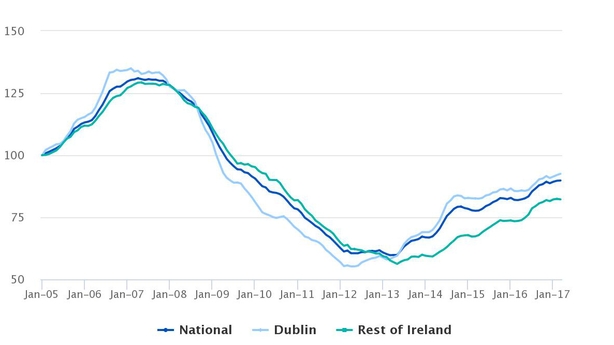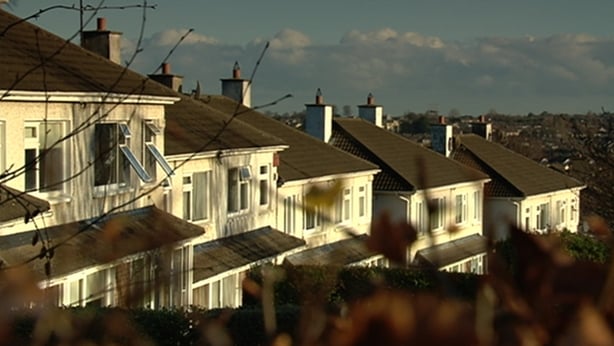Residential property prices recorded another big jump in March, with house prices outside of Dublin city again outpacing those in Dublin.
The latest figures from the Central Statistics Office show that residential property prices rose by 9.6% in the year to March on an annual basis - the highest level in almost two years.
The CSO also said it had revised February's growth levels from 10.7% to 9.4%.
On a monthly basis, residential property prices rose 0.1% in March compared to February.

House price growth has begun to accelerate again amid a chronic lack of supply and a surge in demand for mortgages following an easing of the Central Bank's lending rules and the introduction of a new Government help to buy subsidy.
Today's figures show that Dublin residential property prices increased by 8.2% in the year to March, while prices in the rest of the country were 11.8% higher.
Dublin house prices increased by 8%, while apartment prices rose by 9.6%.
The CSO said the highest house price growth in the Dublin region was seen in Dublin City, with growth of 10.7%. The lowest growth was reported in Fingal, with house prices there up by 2.2%.
Meanwhile, house prices in the rest of Ireland were up 11.3% in the year to March, while apartment prices jumped by 16.4%.
The South-East region of the country showed the greatest price growth at 15.5%, while the Mid-East region saw the slowest growth, with house prices there up by 9.2%
In the 12 months to March, the average market price for a home nationwide was €246,948.
The average price for a home in Dublin was €400,489.
The CSO said that of the four administrative areas of Dublin, Dun Laoghaire-Rathdown was the most expensive with the average price of a home coming in at €561,203.

South Dublin was the cheapest, with an average price of €314,932.
Co Wicklow was the most expensive county after Dublin with the average cost of a new home standing at €316,269.
The least expensive county to buy a home was Co Longford, with average prices there of €87,989.
Today's CSO figures also show that a total of 3,026 residential property purchases were filed with Revenue in March, up 12.2% on the same month last year.
The total value of the market based on transactions filed in March was €754.8m.
In the 12 months to March, a total of 37,623 property purchases were filed with Revenue.
Of these 25.5% were purchases by first time buyers, while 51.7% were buys by former owner occupiers and 22.8% were buys by non-occupiers.
In March, 804 first time buyer purchasers were filed with Revenue, up 22% on the same time last year.
Commenting on today's CSO figures, Merrion economist Alan McQuaid said there is a housing crisis in the country.
"A lack of supply of houses has pushed up the cost of a property and until this issue is addressed, prices will likely remain elevated, and unaffordable to many," the economist said.
"We see house price growth remaining in positive territory on a year-on-year basis for a while yet, with the annual rate of increase set to remain in the 7-12% range over the next few months," he added.

